What Is The Most Expensive Seafood In the World?
The Top Luxurious Seafood You Must Try

The variety of marine delicacies on offer is truly astounding. Boasting a spectrum of tastes and visual appeal, the priciest marine treats from around the world will surely ignite your curiosity and tantalize your taste buds.
For those with an appetite for upscale seafood and a taste for luxury, the question arises: which is the costliest seafood to dine on? The revelation might just astonish you!
1. Bluefin Tuna
Price: $5,000 per pound
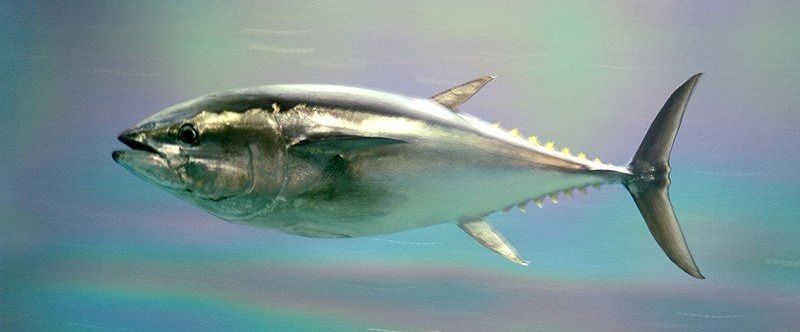
In 2019, a remarkable event took place at an auction when a bluefin tuna fetched a staggering price of $3.1 million, which translates to a whopping $5,057 for every pound. This 278-kg (613-lb) marvel from the waters of Aomori prefecture in northern Japan was bought by Kiyoshi Kimura, the proud owner of the Sushizanmai chain. Notably, this price was double what he paid for a similar catch just six years earlier.
Prices can vary based on sourcing; however, it's universally acknowledged that bluefin tuna never comes cheap. For instance, locally sourced bluefin from the U.S. east coast might cost between $20 and $40 per pound. In contrast, Japanese imports could surge beyond $200 per pound.
Upscale sushi establishments might offer select pieces at around $80 each. The luxurious otoro, which is the fattiest section, chutoro, a blend of fat and lean meat, and akami, the leanest cut, provide diverse flavor profiles for discerning palates, being the most sought-after portion, is also the priciest due to its limited quantity and the effort needed to refine it.
While both American and Japanese bluefin have their seasonal peaks, many connoisseurs believe the tuna from Oma in Japan sets the global standard.
Oma Bluefin tuna stands out for its optimal fat balance, a characteristic attributed to its unique habitat. Found swimming in the Tsugaru channel, where the currents of the Atlantic Ocean and the Sea of Japan converge, the Oma tuna predominantly feeds on squid and the fatty saury. This specific diet enriches the fish with just the right fat consistency.
As for the peak time to enjoy Oma tuna, it's between fall and the New Year, aligning with the region's coldest months.These unmatched qualities and the artistry of top chefs account for the exorbitant prices of dishes made from this elite fish.
2. Glass Eels aka Elvers
Price: $2000 - $3,000 per pound
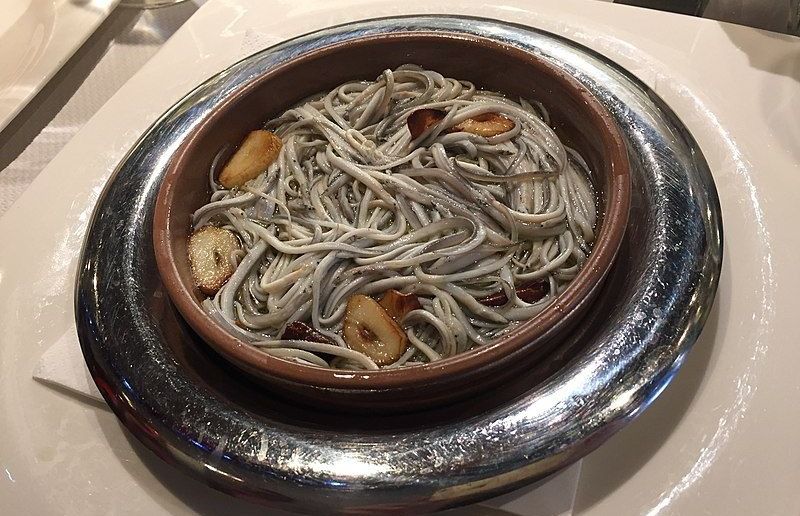
Angulas, or Baby Glass Eels, often likened to the "Caviar of Northern Spain," stand out as a distinguished seafood delight.
Glass eels weren't always synonymous with luxury. Originally, these young Atlantic eels were savored during special occasions in Spain or exported to Asia, where they were nurtured into mature eels for culinary uses.
Their transition to a luxurious commodity mainly began in the 2010s. A decade ago, elvers fetched around $185 per pound, but their price skyrocketed to over $3,000 per pound in subsequent years.
The higher price tag has ironically made them even more desirable for gourmets and upscale dining establishments.
With its rising popularity, an underground market for this unique delicacy has emerged. In places like Maine, fishing licenses for glass eels are so coveted that they're allocated through lotteries.
In Spanish culinary traditions, elvers are typically cooked a la bilbaína: swiftly fried in olive oil seasoned with garlic and chili peppers until they lose their transparency. This delicacy is then typically enjoyed atop crusty bread.
Another preparation involves combining them with scrambled eggs, a method appreciated in both Spain and England. Given their tender nature, they require minimal cooking time.
3. Japanese Sea Cucumber
Price: $1,360 per pound
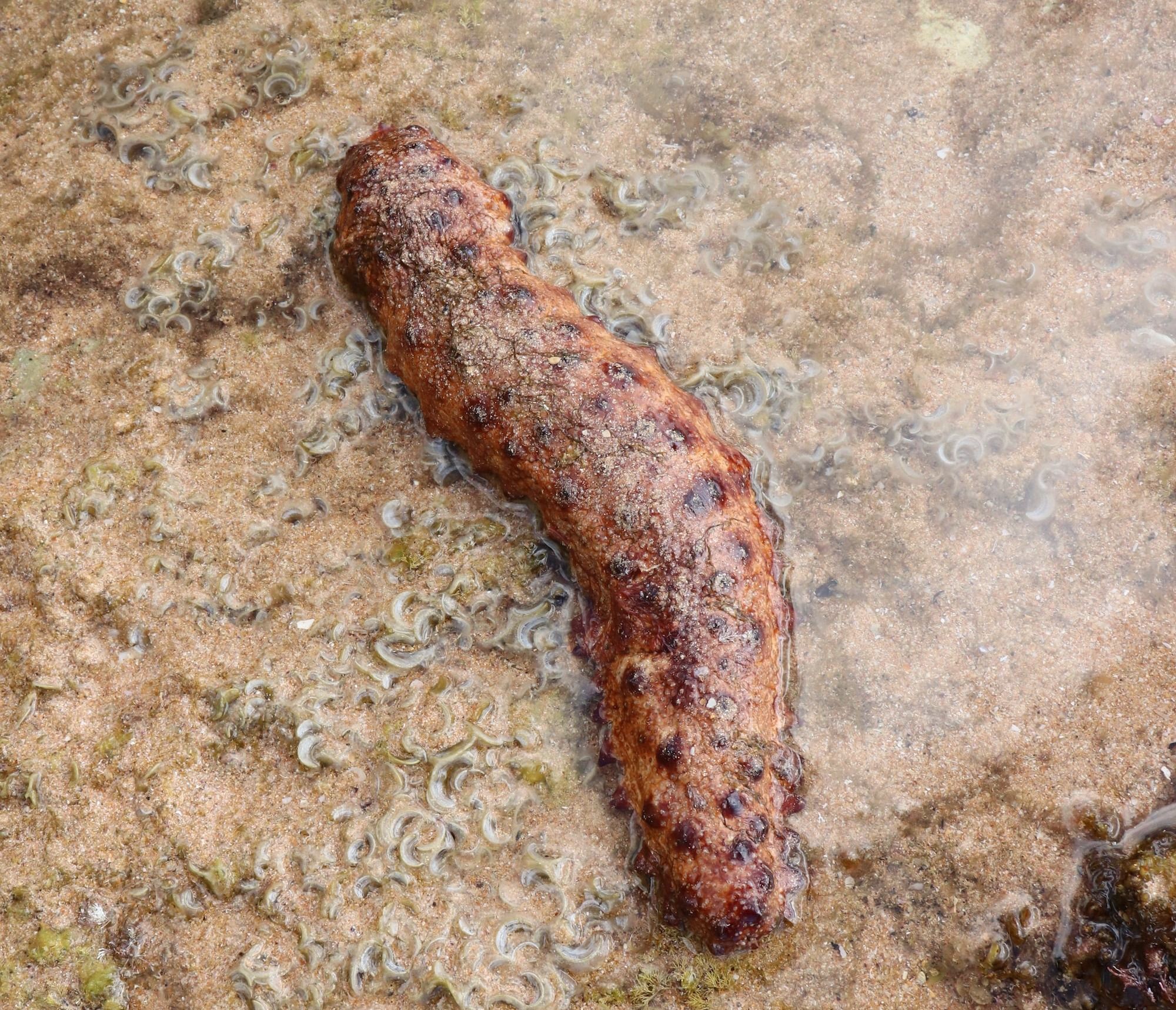
Japan has a rich history with sea cucumbers, known locally as namako. Particularly in Aomori, namako holds a cherished spot in the New Year’s meal.
Japan's unique approach to sea cucumber farming involves nurturing wild larvae in controlled settings before releasing them back into the ocean.
The most recognized species is the manamako, an echinoderm with a distinct cylindrical shape. Based on their habitats, they are categorized as red aka-namako, blue ao-namako, or black kuro-namako.
Historically termed as "ko", fresh sea cucumbers were called nama-ko, while their dried counterparts were labeled iri-ko. The delicacies derived from them, such as ko-no-wata, share the limelight with sea urchin and karasumi in Japanese cuisine.
Additionally, sea cucumbers are renowned for producing bioactive compounds, which have been integral to traditional Chinese medicine.
Historically, they have been utilized to address various health issues such as arthritis and cancer. Currently, global research is delving into the potential nutraceutical and pharmaceutical benefits of these compounds.
The distinctive taste of premium variant, Yokohama Namako is attributed to its rocky coastal habitat. Unlike most sea cucumbers that need pre-boiling, Yokohama Namako is often enjoyed raw.
Every December, this delicacy is celebrated at the Yokohama Namako Fair, featuring a range of dishes starring this sea cucumber.
4. Japanese Sea Urchin
Price: $230 per pound
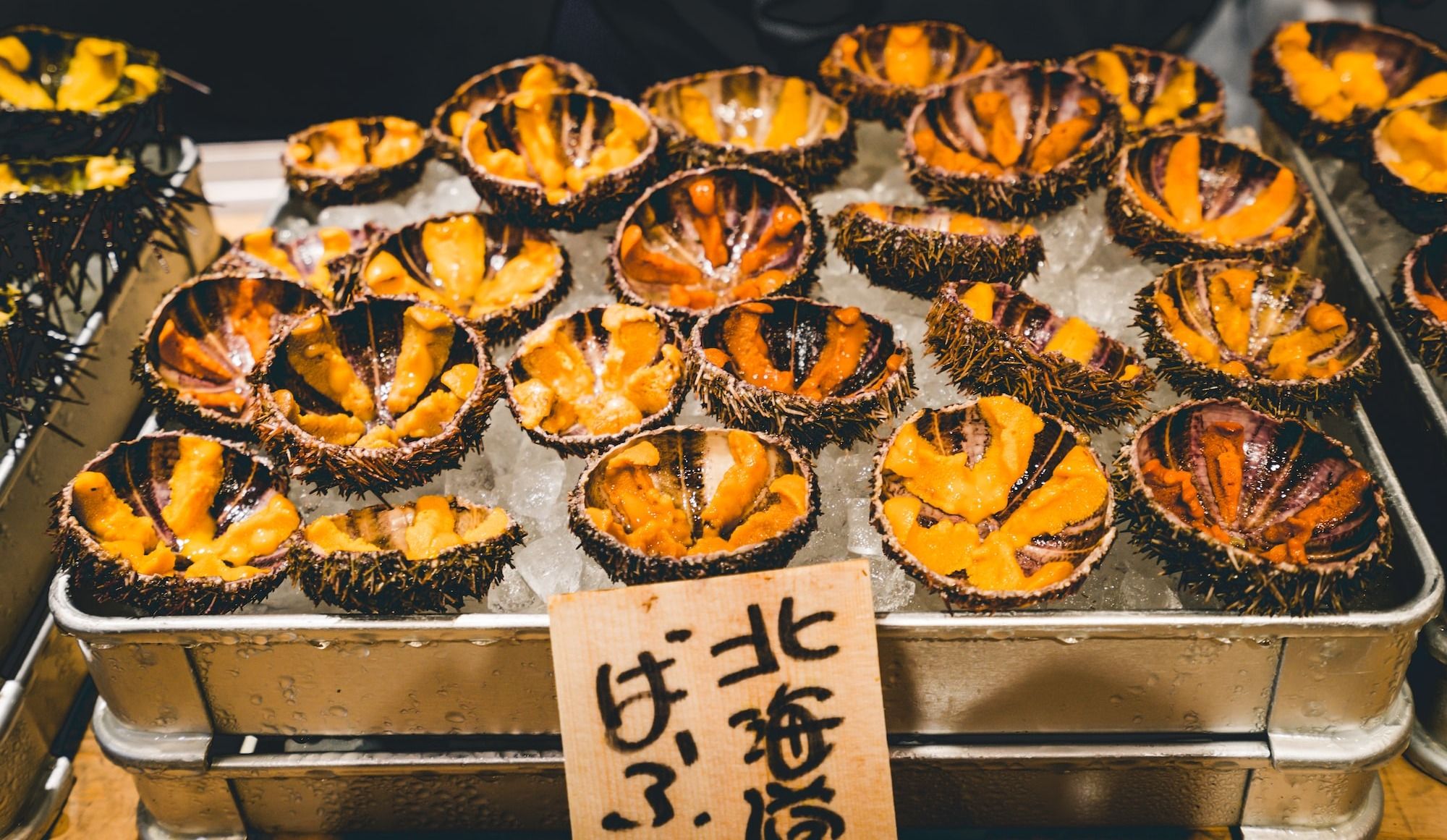
The roe-producing gonads of sea urchins, commonly known as uni, are highly coveted for their distinct taste in many global cuisines. Though enveloped by a spiky exterior, these organs are considered a delicacy.
A tray weighing around 200 grams can fetch prices as high as US$100. However, in Japan, the value can skyrocket, with some commanding prices up to fivefold.
Three standout culinary delights from the sea are the purple urchin (Paracentrotus lividus), which thrives in the Mediterranean Sea and parts of the Atlantic; the red sea urchin (Strongylocentrotus franciscanus), native to the Pacific Ocean stretching from Baja, California to Alaska; and the versatile green sea urchin (Strongylocentrotus droebachiensis), which can be found in both the Atlantic and Pacific Oceans as their lobes are often more substantial and visually appealing.
Chefs often note distinctions between sea urchins from the two coasts: California's sea urchins boast a sweeter and creamier taste, attributed to the elevated sulfur levels in the Golden Coast's waters. In contrast, the uni from near Maine typically present a more vibrant color and a firmer texture.
Hokkaido, Japan's northernmost island, is renowned for producing some of the country's finest sea urchin. This exceptional quality is attributed to the urchin's diet of Kombu (kelp), which thrives in the island's cold, nutrient-dense waters, as opposed to the Wakame consumed elsewhere.
Hokkaido's waters are home to two predominant sea urchin species: Kita Murasaki Uni and Ezo Bafun Uni.
Kita Murasaki Uni stands out as Japan's premium sea urchin, boasting an impressive size akin to a human thumb, and a uniquely creamy texture complemented by a rich, nuanced flavor. It's widely celebrated for having the most delectable sweetness among all sea urchins.
On the other hand, the Ezo Bafun Uni, or Sea Chestnut, is distinguished for its unmatched creaminess, even if slightly less sweet than its counterpart. An added advantage is its ability to maintain shape during transit, marking it as a favorite for exports throughout Japan.
Uni should be harvested specifically on the two days leading up to the full moon, it's imperative to select sea urchins showcasing a vibrant coral red star, while discarding the yellow ones. The moon's influence is crucial in this context.
Without its timely collaboration, there's not only a risk of the sea urchins being less full, but more importantly, they may lack the unique sedative and narcotic properties that are beneficial for promoting restful sleep.
5. Fugu (Puffer Fish)
Price: $200 per pound
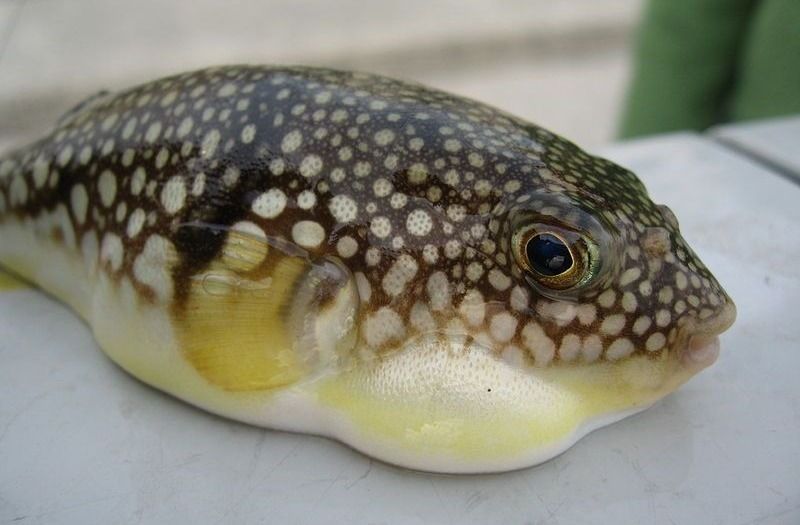
Fugu, a uniquely pricey seafood delicacy, is renowned not only for its taste but also its potential danger. Derived from a type of pufferfish that inflates defensively, fugu carries lethal toxins.
Only chefs with specialized training can safely prepare it, making them a rarity. As a result, only a select number of restaurants offer this dish.
Fugu is often described by some as having a flavor reminiscent of chicken, but avid enthusiasts argue it possesses its own unique taste and texture. With its white flesh that's rich in protein, the fish boasts a subtle taste bursting with umami and a hint of sweetness.
With the stakes so high, it's generally advised to opt for the more expensive preparation, prioritizing safety over savings.
The allure of fugu, combined with strict regulations around its serving, limits its availability to primarily upscale sushi venues and exclusive establishments in Japan. This exclusivity further drives up its cost and maintains its reputation as a luxury dish.
What Factors Influence Seafood Pricing?
When some fish species fetch prices akin to luxury homes, it's natural to question the reasoning behind such steep costs, be it in local markets or upscale eateries. Spending what could buy several properties on a fish portion seems perplexing, right?
In fact, various elements shape the pricing of the world's most elite seafood. Notably, the soaring prices often aren't directly related to the meat's inherent quality. Let's look into the factors dictating the value of top-tier seafood:
1. Supply And Demand
Globally, seafood is a prized commodity, yet its acquisition from oceans proves more challenging than terrestrial sources. The allure for wild-caught varieties is fueled by population surges, health insights, and sustainable consumption concerns. However, challenges like marine depletion and pollution curtail availability.
In contrast to land-based livestock like chickens, ramping up wild seafood production in response to demand isn't straightforward.
Despite a fourfold growth in aquaculture over recent decades, the global populace has also expanded, intensifying the quest for fish. Countries such as Spain, Japan, and Korea spotlight seafood in their culinary traditions. Additionally, the health-centric Mediterranean diet and the global popularity of sushi amplify this demand.
With wild fish stocks receding, even as fish farming expands, the overall seafood supply remains somewhat static. This equilibrium, against a backdrop of mounting demand, predicates the escalating costs of seafood.
2. Logistics
Inland regions face particular challenges with seafood transportation, incurring additional costs. Cultivating crops and harvesting produce like berries on farmland is comparatively straightforward. While farm-raised seafood, poultry, beef, and other produce can utilize cost-effective transport methods like cargo ships, trains, and trucks, fresh wild fish often require pricier options such as air cargo, express buses, and fast-tracked trucking due to their limited shelf life.
The intricacies and expenses involved in transporting seafood surpass those of other foods. Seafood's taste can shift within a day, and products that aren't fresh are typically deemed subpar, necessitating them to be as recently harvested from the ocean as possible. The substantial manual labor essential for these processes further escalates costs, given the sizable workforce and the wages they command.
3. Capturing Seafood Can Be Challenging
Catching seafood from the wild is no easy task and demands significant expertise. This endeavor often necessitates sizable fishing setups and advanced equipment.
Fishermen venture into the vastness of the sea, deploying extensive nets from their vessels. They patiently await until a substantial portion of the net is filled before hauling it in to collect the catch.
Given the remote and unpredictable nature of the open ocean, these fishing expeditions are meticulously planned well in advance. Lacking immediate access to facilities, these fishermen ensure they are well-equipped, carrying essential medical supplies to address potential emergencies or mishaps at sea.
4. Difficult To Maintain due to High Death Rate
If you're not opting for wild-caught varieties, you're likely choosing farm-raised fish. While this eliminates the need for costly ocean ventures with trained crews, sustaining fish farms is no small feat.
Compared to traditional livestock farming, aquaculture demands a heightened expertise, encompassing ideal environmental conditions and meticulous cleanliness. Fish must reside in spacious environments, as overcrowded tanks can be breeding grounds for infections.
Owing to the specialized knowledge required, only a select few are equipped to operate and manage fish farms. This limitation in supply means existing fish farms can command higher prices for their yield. In essence, fish farming is resource-intensive and necessitates adept oversight.
5. Rarity
One key reason for seafood's high cost is its rarity. Some fish and shellfish are less abundant due to overfishing, regulations, or unique breeding conditions, elevating their prices.
For example, Bluefin tuna, prized in premium sushi dishes, has seen declining populations because of overfishing and slow reproduction, boosting its value. Lobsters, especially large ones, are less common and thus costlier. Swordfish, with its distinct flavor and overfishing concerns, can also fetch higher prices.
In short, the scarcity of certain seafood, influenced by ecological and human factors, significantly impacts their cost.
6. Regulatory Constraints
Interestingly, some of the most expensive fish globally are either endangered or on the brink of it. The rarer and tastier a fish, the higher its demand.
Many regions enforce stringent guidelines on the capture of particular fish species, putting a cap on the annual catch. These regulatory constraints inadvertently enhance the value and allure of these fish. It's believed that around 20% of wild-caught fish imported into the U.S. breach some legal norms.
However, if you're keen on sampling the ocean's premium offerings, ensure your choices are sourced legally. Ignoring this could result in substantial fines, overshadowing the fish's original cost.
7. Culinary Reputation
Demand complements supply, and certain seafoods gain value due to a human-driven factor: status. This perception, however, can evolve over time, with seafood being a prime example.
Take lobster, for instance. During many feudal eras, it was often relegated to the plates of landless peasants, considered nothing more than bycatch and seen as an undesirable bottom-dweller.
Fast forward to the present, and this crustacean occupies a coveted position on the menus of top-tier restaurants worldwide. Many renowned chefs vie for a chance to showcase their spin on this esteemed delicacy.
There are numerous other examples of such shifts in culinary reputation, but it's crucial to recognize this dynamic when considering the foods in any such list.


